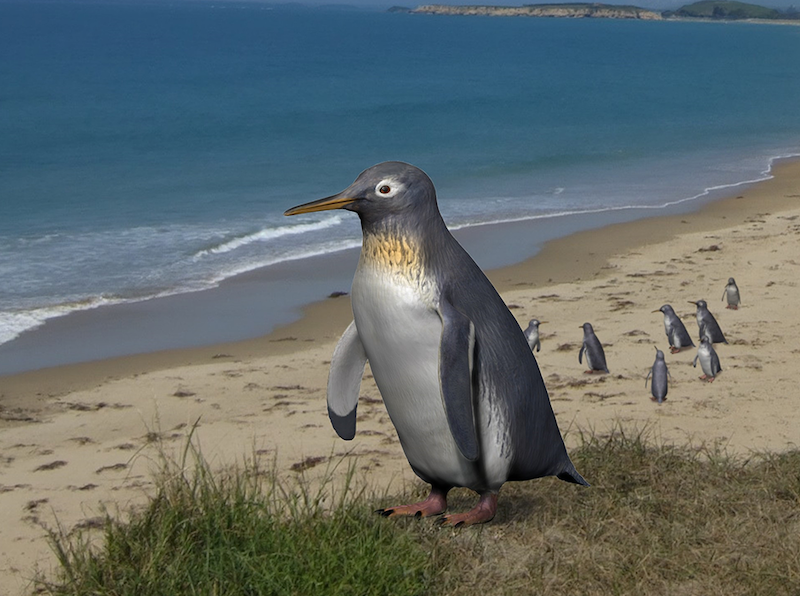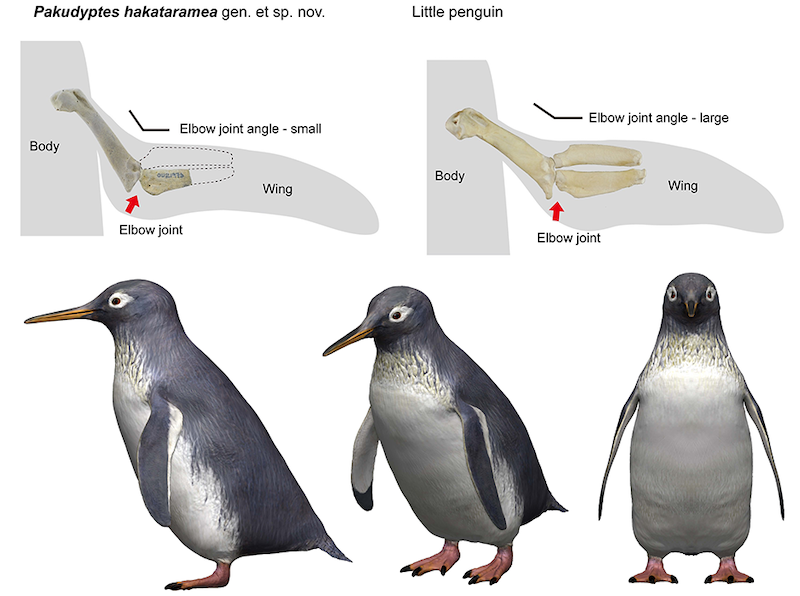
Penguins with their flipper-like wings may look comical as they waddle on land. But in the water, those wings and torpedo-shaped bodies make these seabirds expert, graceful divers. Scientists said on August 1, 2024, that fossilized penguin bones from New Zealand, dated to 24 million years ago, are now revealing new details on the evolution of penguins’ wings.
These findings were published in the peer-reviewed Journal of the Royal Society of New Zealand on August 1, 2024.
Penguins are well-adapted for ocean life
There are 18 species of penguins alive today. These flightless birds live mostly along Southern Hemisphere coastlines and oceans. One exception is a species found north of the equator at the Galápagos Islands. The largest penguin species, the emperor penguin that lives in Antarctica, is over 4 feet (1.2 meters) tall. At the other extreme is the diminutive little blue penguin, of Australia and New Zealand, that measures just a foot (30 cm) in length.
Penguins are expert ocean swimmers that feed on fish, krill and squid. They have streamlined bodies optimized for moving through water. And they use their finlike wings to propel forward, as if flying underwater. The gentoo penguin is the fastest diver. It can reach speeds of up to 22 miles per hour (35 kph) and can dive as deep as 660 feet (200 m). An emperor penguin can dive as much as 1,800 feet (548 m) deep. Smaller penguins, like the little blue penguin, however, tend to forage closer to the water surface.
A missing link in penguin evolution
Modern-day penguins began their evolutionary journey about 34 million years ago, during the Oligocene. Pakudyptes hakataramea, the new penguin species reported by the researchers, lived 24 million years ago in New Zealand. It was identified from fossilized wing bones found in the Hakataramea Valley, South Canterbury, New Zealand, in 1987.
Pakudyptes was a small penguin, about the size of the little blue penguin, the smallest penguin species alive today.
Tatsuro Ando of the Ashoro Museum of Paleontology in Japan is the paper’s lead author. He said in a statement that Pakudyptes’s wing bones filled a gap in the bone forms seen in fossils and currently living (or extant) penguins. He commented:
In particular, the shape of the wing bones [between fossil and extant penguins] differed greatly, and the process by which penguins’ wings came to have their present form and function remained unclear.
The humerus and ulna highlight how penguins’ wings have evolved.
Surprisingly, while the shoulder joints of the wing of Pakudyptes were very close to the condition of the present-day penguin, the elbow joints were very similar to those of older types of fossil penguins.
Pakudyptes is the first fossil penguin ever found with this combination, and it is the “key” fossil to unlocking the evolution of penguins’ wings.

Pakudyptes bone structure indicates it was also a diver
Modern penguins have dense thick bones that help them maintain buoyancy while diving. According to Carolina Loch at the University of Otago, Pakudyptes’s internal bone structure revealed it only dove to shallow depths. The outer bone layer – the bone cortex – was thick while the internal cavity that would have contained bone marrow was open. This bone structure was similar to that of the little blue penguin.
The fossilized humerus and ulna also showed areas where muscles and ligaments once attached to it. That helped reveal how Pakudyptes used its wings to swim underwater.
Loch remarked:
Penguins evolved rapidly from the Late Oligocene to Early Miocene, and Pakudyptes is an important fossil from this period. Its small size and unique combination of bones may have contributed to the ecological diversity of modern penguins.
Bottom line: A penguin fossil from 24 million years ago in New Zealand has shed new light on the evolution of penguins’ wings.
Read more: New emperor penguin colonies discovered by satellite











